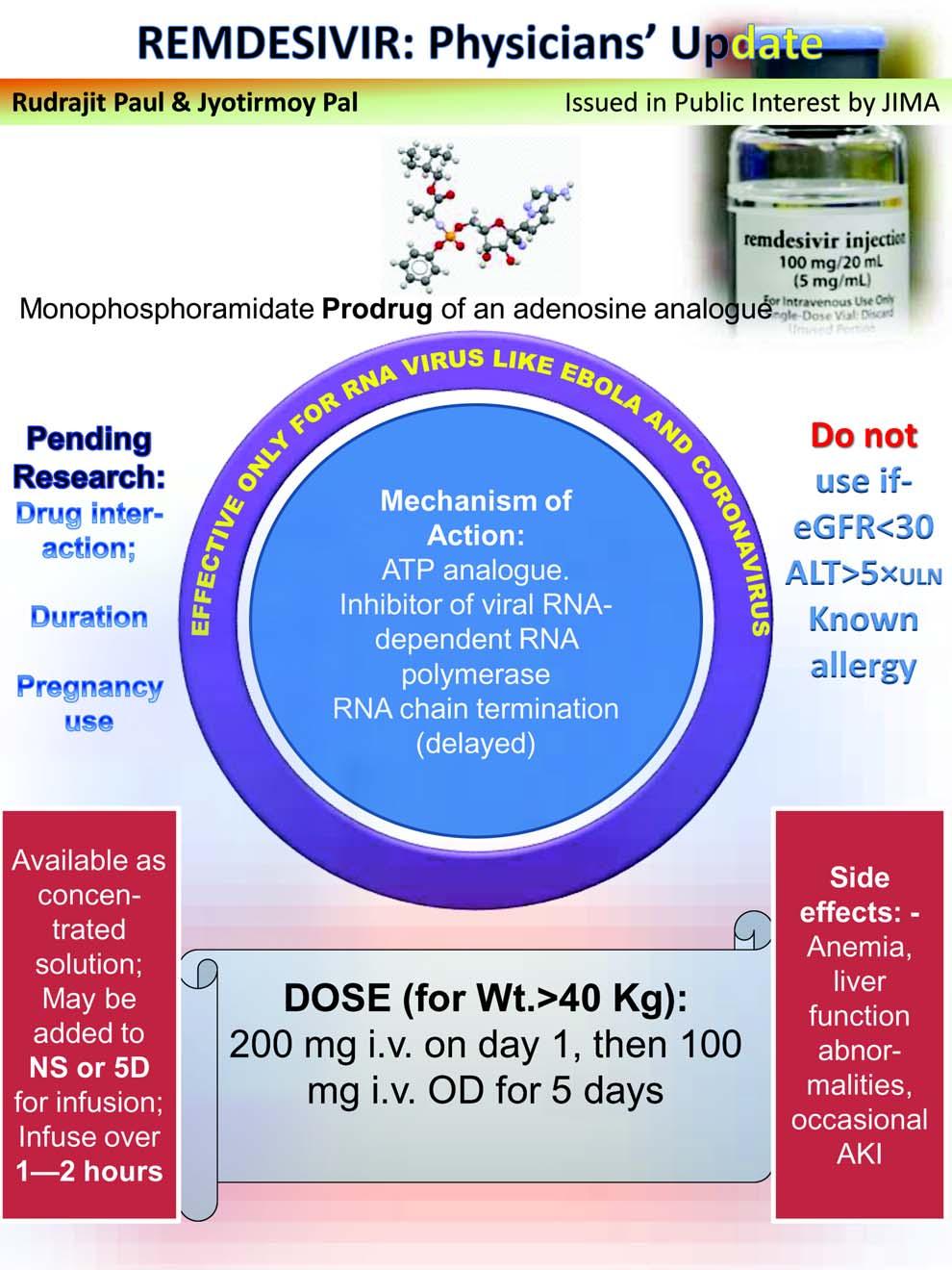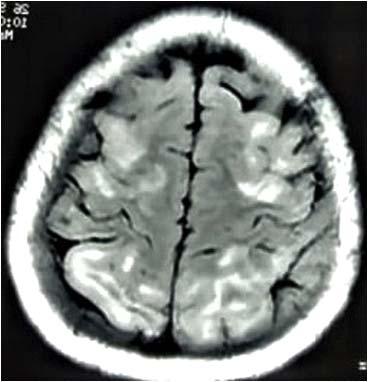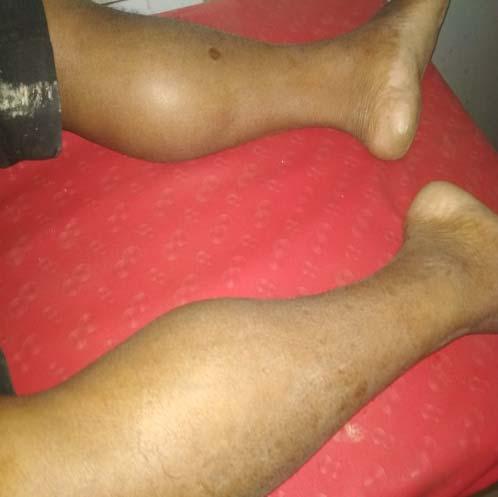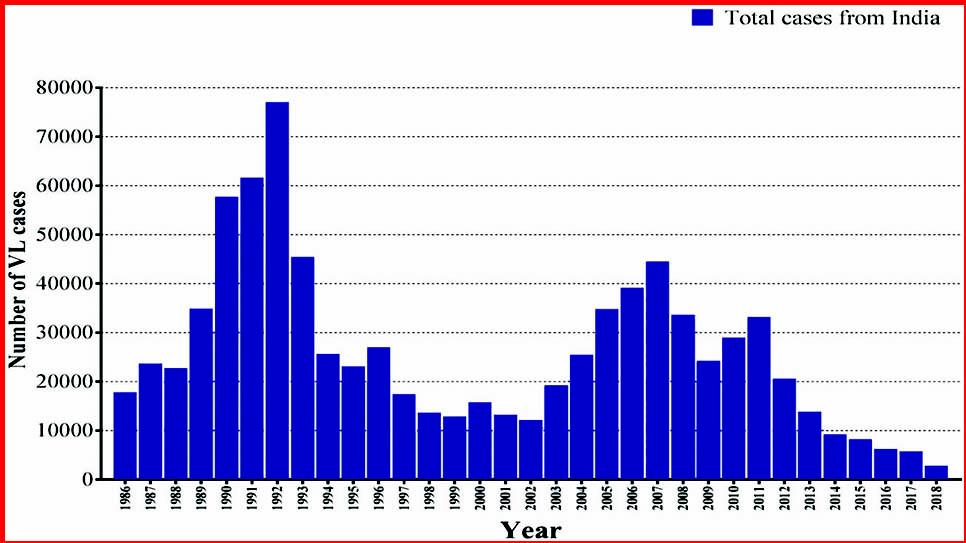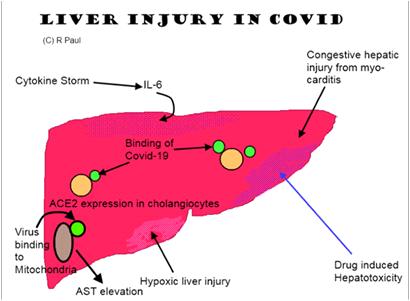
14 minute read
Frequency of Comorbidities & their Association with Intensive Care Unit Admission in Hospitalised Patients with 2019 Novel Coronavirus infection in Tertiary Care Centres of Three States of India
JOURNAL OF THE INDIAN MEDICAL ASSOCIATION, VOL 118, NO 06, JUNE 2020
Original Article Frequency of Comorbidities & their Association with Intensive Care Unit Admission in Hospitalised Patients with 2019 Novel Coronavirus infection in Tertiary Care Centres of Three States of India
Advertisement
Atanu Chandra 1 , Sudipta Bandopadhyay 2 , Arindam Nag 3 , Tanuka Mandal 4 , Purbasha Biswas 5 ,Dwijen Das 6 , Prabhat Pandey 7 , Uddalak Chakraborty 5
The coronavirus disease 2019 (COVID-19) has created a substantial burden on healthcare services worldwide. Since its first detection in 30th January, it has rapidly spread throughout India. Severe acute respiratory syndrome coronavirus-2 (SARS-CoV-2) infection results in clusters of severe acute respiratory illness leading to intensive care unit (ICU) admission and considerable mortality. So, there has been an ardent need of data on the frequency of comorbidities in COVID-19 & to assess whether their presence is associated with increased ICU admission. We analysed data from 496 patients with laboratoryconfirmed Covid-19 admitted in tertiary care centers of three states of India from 15th to 30th May, 2020. The mean age was 49.7 years & 41.13% of the patients were female. Hypertension (21.97%) was the most frequent comorbidity followed by diabetes (12.90%) & cardiovascular disease (8.87%). 39.92% of the study population had at least one comorbidity. Patients with comorbidities had higher ICU admission than those without comorbidity (35.35% vs. 20.47%). Associated comorbidity was more frequent among ICU patients in comparison to non-ICU patients (53.43% vs. 35.07%). Our study findings suggest that presence of comorbidity is associated with higher ICU admission thereby indicating more severe disease.
[J Indian Med Assoc 2020; 118(6): 31-4]
Key words : COVID-19, SARS-CoV-2, Comorbidity, Intensive care unit.
Coronavirus disease 2019 (COVID-19), a novel viral infection by severe acute respiratory syndrome coronavirus 2 (SARS-CoV-2) was first detected in Wuhan, China in December 2019 & it has recently become a public health emergency 1 . COVID-19 has contributed to a massive adverse impact globally due to its high transmission rate. The infection has spread in such a large proportion affecting most of the
Editor's Comment :
Hypertension, diabetes, heart disease & CKD are common comorbidities in all studies. Presence of comorbidity is associated with higher ICU admission thereby indicating more severe disease. Thorough assessment of comorbidities of patients with
COVID-19 & proper management of those chronic ailments during the hospital stay is very important. Special care should be provided in this subset of patients
1 MD (Medicine), DNB (Med), MRCP (UK); Assistant Professor, Department of General Medicine, R.G.Kar Medical College and Hospital, Kolkata 700004 2 DCH, MD (Medicine); Assistant Professor, Department of General Medicine, R.G.Kar Medical College and Hospital, Kolkata. 3 MD (Medicine), Associate Professor, Department of General Medicine, R.G.Kar Medical College and Hospital, Kolkata 4 MD (Medicine), MACP ; Senior Resident, Department of General Medicine, R.G.Kar Medical College and Hospital, Kolkata and Corresponding Author 5 MBBS ; Junior Resident, Department of General Medicine, R.G.Kar Medical College and Hospital, Kolkata 6 MD(Medicine), FRCP; Associate Professor, Department of General Medicine, Silchar Medical College & Hospital, Silchar 7 MD (Medicine) MIP, FCCP, FICP, FCSI, FCGP, FIAMS, FICA, PG Dip (Diabetology), Associate Professor, Department of General Medicine, Chandulal Chandrakar Memorial Hospital, Chattisgarh
Received on : 16/06/2020 Accepted on : 20/06/2020
countries in the world, that WHO has declared it as a pandemic on March 11, 2020 2 . The first confirmed case of SARS-CoV-2 was reported in India on 30th January 2020. Since then, more than 3 lakh cases of COVID19 have been reported in India, including over 8700 deaths (as on June 12th, 2020) 3 .
Infection by SARS-CoV-2 has myriads of presentations like fever, cough, respiratory distress along with atypical manifestations like diarrhea, neurological, renal dysfunction etc 4 . In the recently published studies, 20–51% of patients of COVID-19 were reported to have at least one comorbidity.5 COVID-19 patients are predisposed to higher risk of acute respiratory distress syndrome (ARDS) and death if associated with chronic illness 5,6 . During the last
31
JOURNAL OF THE INDIAN MEDICAL ASSOCIATION, VOL 118, NO 06, JUNE 2020
few months, many studies have been published on (4.43%), obstructive airway disease (4.23%), SARS-CoV-2 infection describing the comorbidities in hypothyroidism (3.43%) & malignancy(3.22%). The patients with COVID-19 & its impact on the outcome. ‘others’ category included cerebrovascular accident,
In this study, we performed a comprehensive parkinsonism, obstructive sleep apnea, post-operative evaluation of the associated comorbidities in patients patients etc. & they were responsible for 8.26% of the with COVID-19 admitted in tertiary care centers of three cases. The summary of the associated comorbidities states of India from 15th to 30th May, 2020. The purpose in our study are shown in Table 1. Summary of the of our study is to determine the frequency of gender wise distribution of comorbidities among comorbidities in the laboratory confirmed cases of COVID-19 patients are shown in Table 2. Bar diagram SARS-CoV-2 infection & whether their presence is showing gender wise distribution of comorbidities is associated with increased ICU admission. These depicted in Fig 1.Patients with comorbidity had higher findings may help us extend our understanding on mean age than those without any comorbidity (57.8 these factors associated with COVID-19. To the best years versus 43.2 years). 70 out of 198 cases (35.35%) of our knowledge, there are no such studies from this with comorbidity were admitted in ICCU. On the other area on this topic.
MATERIALS AND METHODS We had evaluated the medical records of 496 Table 2 — Summary of gender wise distribution of comorbidities laboratory-confirmed Covid-19 patients admitted to Comorbidity Male Female tertiary care centers of three states of India from 15th Hypertension 67 42 May to 30th May, 2020. A confirmed case of SARSCoV-2 infection was defined as a positive result on real-time reverse-transcriptase–polymerase-chainDiabetes Mellitus 37 27 Cardiovascular Disease 24 20 Chronic Kidney disease 12 10 Obstructive airway disease 14 7 reaction (RT-PCR) assay from nasopharyngeal and Hypothyroidism 6 11 oropharyngeal swab specimens. Presence of comorbidities was determined on the basis of patient's self-report at the time of admission. Comorbidities were Malignancy 10 6 Chronic Liver Disease 9 4 Others 26 15 primarily considered as a categorical variable (yes versus no) and then categorized on the basis of the number of comorbidity (single versus multiple). Moreover, comorbidities were classified according to Table 1 — Summary of the Associated Comorbidities in patients with COVID-19 Comorbidity Frequency Percentage the organ systems involved (ie, respiratory, Hypertension 109 21.97% cardiovascular, renal, central nervous system etc). Continuous variables were presented as mean or median as appropriate, and the categorical variables Diabetes Mellitus 64 Cardiovascular Disease 44 Chronic Kidney disease 22 Obstructive airway disease 21 12.90% 8.87% 4.43% 4.23% were expressed as counts and percentages. No Hypothyroidism 17 3.43% imputation was made for missing data. Because the cohort of patients in our study was not derived from random selection, all statistics are deemed to Malignancy 16 Chronic Liver Disease 13 Others 41 3.22% 2.62% 8.26% be descriptive only.
OBSERVATIONS
We obtained data regarding comorbidities in 496 patients admitted in tertiary care centers of three states of India from 15th May to 30th May, 2020. Of these 496 cases, mean age was 49.7 years. 292 cases were male (58.87%), while 204 (41.13%) cases were female. Our study revealed that 198 out of 496 patients(39.92%) had at least one comorbidity. Hypertension (21.97%) was the most frequent comorbidity observed in our study. This was followed by diabetes (12.90%), cardiovascular disease (8.87%), chronic kidney disease Fig 1 — Bar diagram showing gender wise distribution of comorbidities 32
JOURNAL OF THE INDIAN MEDICAL ASSOCIATION, VOL 118, NO 06, JUNE 2020
hand, 61 out of 298 patients (20.47%) without comorbidity were in ICCU. Among ICCU-patients, 53.43% (70 out of 131patients) had comorbidity ,while in case of non ICCU-patients it was 35.07% (128 out of 365 patients).
DISCUSSION
We analysed data from 496 patients with laboratory-confirmed Covid-19 admitted in tertiary care centers of three states of India. 39.92% of the study population had at least one comorbidity. Hypertension (21.97%) was the most frequent comorbidity followed by diabetes (12.90%) & cardiovascular disease (8.87%). Patients with comorbidity had higher ICU admission than those without comorbidity (35.35% versus 20.47%). Presence of comorbidity was more frequently observed among ICU patients in comparison to non-ICU patients (53.43% versus 35.07%). It was seen in our study that patients with a single comorbidity, or even more so, were associated with increased frequency of ICCU admission thereby indicating more serious illness.
Overall, our study findings are in accordance to the previously published studies in terms of the frequency of comorbidities in patients with COVID-19. There are some variations of our study findings with a few studies. This may be due to difference in the study area, sample size & sample selection. Guan WJ et al. analyzed data from 1590 confirmed hospitalized patients of COVID-19 from 575 hospitals in mainland China.5 In their study, most common comorbidity was hypertension (16.9%), followed by diabetes (8.2%). 16% of the study population had severe disease. 25.1% were reported to have single or multiple comorbidity. They concluded that, patients with any comorbidity had worse clinical outcome than those without comorbidity. Persons with multiple comorbidities also had poorer clinical outcome.
Huang C et al. evaluated the clinical characteristics of 41 patients infected with SARS-CoV-2 in Wuhan,China.4 32% of all the patients had underlying comorbidity. Diabetes mellitus, hypertension & cardiovascular disease were most common among all the comorbidities. Chen N et al studied the epidemiological and clinical features of 99 cases of SARS-CoV-2 pneumonia in Wuhan, China where they found that 51% of all the patients had comorbidities including cardiovascular and cerebrovascular diseases, respiratory ailments, endocrine system disease, choric liver disease, malignancy and nervous system disorders.7 Liu K et al analysed the Clinical & demographic features of 137 patients infected with 2019-nCoV in tertiary hospitals in Hubei Province of 33 China. In their study, 27 out of 137(19.7%) patients had associated comorbidity.8 Hypertension, diabetes & cardiovascular diseases were most common all the chronic comorbidities.
Singh AK et al retrieved data from ten available Chinese studies (total sample size 2209) by searching the medical database up to March 27, 2020.9 In their review article they found that hypertension was the commonest comorbidity present in nearly 21%.This was followed by diabetes (11%) & cardiovascular disease (7%). Though it was mentioned in most of the studies that there is increase in mortality in patients of COVID-19 with hypertension, diabetes and CVD, they concluded that most of them were not adjusted for confounding factors. They also opined that special attention is definitely required in patients with COVID19 with associated comorbidities including hypertension, diabetes and established CVD. Richardson S et al. studied clinical characteristics, associated comorbidities, and outcomes of 5700 hospitalized patients with COVID-19 in the New York City 10 . This was the first large case series of hospitalized confirmed COVID-19 patients in USA. They found that preexisting hypertension (56.6%) and/ or diabetes mellitus (33.8%) were highly prevalent in their study population. They had not analysed whether the associated comorbidities were related to adverse clinical outcome or not. The higher frequency of hypertension and diabetes as comorbidity in COVID19 patients most probably reflects the overall higher prevalence of those diseases in the general population. Our previous study on clinical characteristics of hospitalized patients of COVID-19 also revealed hypertension & diabetes as the most common comorbidity 11 . The sample size in that study was smaller than the current one. Comparison of comorbidity status in patients with COVID-19 in different studies are shown in Table 3.
In spite of the variations in the frequency of various comorbidities, hypertension and diabetes remained as the most common comorbidities in our study. Among the other comorbidities, the frequency of obstructive airway diseases was relatively lesser. This may be due to under diagnosis of this condition due to lack of awareness or lack of testing like spirometry 12 . Our findings in terms of lower percentage of chronic kidney disease & malignancy match the results of other recent reports 4,6-8,13 .
The presence of comorbidities has been associated with more adverse clinical outcomes in patients with COVID-19 as seen in different studies 5-7,9 .
Dysregulated immune response & prolonged
JOURNAL OF THE INDIAN MEDICAL ASSOCIATION, VOL 118, NO 06, JUNE 2020
Table 3 — Comparison of comorbidity status in patients with COVID-19 in different studies
Study Sample Size Frequency of Comorbidity(%)
Hyper Diabetes Cardiovascular tension(%) (%) Disease (%) COPD(%) Malig- nancy(%) CKD(%)
Guan et al 1590 25.1 16.9 8.2 3.7 1.5 1.1 1.3 Huang et al 41 32 15 20 15 - - - Chen et al 99 51 40 13 - 1 1 - (including CVD) Liu K et al 137 19.7 9.5 10.2 7.3 1.5 1.5 - Richardson K et al 5700 - 56.6 33.8 - - - - Singh AK et al 2209 - 21 11 7 - - - Our Study 496 39.92 21.97 12.9 8.87 4.23 3.22 4.43
inflammation is probably responsible for the poorer prognosis in susceptible individuals 14 . Persons with multiple comorbidities is also seen to have poorer outcome in comparison to those with single comorbidity.
Our study has several limitations. First, there is a chance of under-reporting of comorbidities as the presence of comorbidity was determined on the basis of self-reporting. Second, due to urgency of data extraction, proper random sampling could not be done in our study. Third, the descriptive statistics in our study was not adjusted for multiple confounding factors. Fourth, all the aspects of clinical outcome were not analysed. We only evaluated the relationship of the presence of comorbidity with ICU admission. Fifth, the duration of our study was relatively shorter & followup was not done.
Our findings suggested that patients with comorbidities had higher frequency of ICU admission indicating more severe disease compared to those without comorbidity. Therefore, thorough assessment of comorbidities along with risk stratification of patients with COVID-19 upon hospital admission & proper management of those chronic ailments during the hospital stay is of paramount importance. Special care should be provided in this subset of patients due to susceptibility to more severe illness. As the prevalence of comorbidities among the general population is different among different countries, caution should be taken whenever comparing our study results to the findings in other countries. Further studies with more sample size and longer duration of study period are needed in this aspect for better assessment and analysis.
Funding : None.
Conflict of interest : None. R EFERENCES
1 Zhu N, et al. A novel coronavirus from patients with pneumonia in China, 2019. N Engl J Med 2020; 382(8): 727-33. 2 World Health Organization. Coronavirus disease (COVID-19) pandemic, 2020. 3 COVID-19 Tracker | India [Internet]. Covid19india.org. 2020.https://www.covid19india.org/. 4 Huang C, Wang Y, Li X, et al. Clinical features of patients infected with 2019 novel coronavirus in Wuhan, China. Lancet 2020; 395: 497-506. 5 Guan WJ, Liang WH, Zhao Y, et al — Comorbidity and its impact on 1590 patients with COVID-19 in China: a nationwide analysis. Eur Respir J. 2020;55(5):2000547. Published 2020
May 14. doi:10.1183/13993003.00547-2020 6 Wang D, Hu B, Hu C, et al — Clinical characteristics of 138 hospitalized patients with 2019 novel coronavirus-infected pneumonia in Wuhan, China. JAMA 2020; in press [https:// doi.org/10.1001/jama.2020.1585]. 7 Chen N, Zhou M, Dong X, et al — Epidemiological and clinical characteristics of 99 cases of 2019 novel coronavirus pneumonia in Wuhan, China: a descriptive study. Lancet 2020; 395: 507-513. 8 Liu K, Fang YY, Deng Y, Liu W, Wang MF, Ma JP, Xiao W,
Wang YN, Zhong MH, Li CH, Li GC, Liu HG — Clinical characteristics of novel coronavirus cases in tertiary hospitals in Hubei Province. Chin Med J (Engl) 2020 May 5; 133(9):1025- 1031. doi: 10.1097/CM9.0000000000000744. PMID: 32044814;
PMCID: PMC7147277. 9 Singh AK, Gupta R, Misra A — Comorbidities in COVID-19: outcomes in hypertensive cohort and controversies with renin angiotensin system blockers.Diabetes Metab Syndr, 14 (2020), pp. 283-287, 10.1016/j.dsx.2020.03.016 10 Richardson S, Hirsch JS, Narasimhan M, et al — Presenting
Characteristics, Comorbidities, and Outcomes Among 5700
Patients Hospitalized With COVID-19 in the New York City
Area. JAMA. 2020;323(20):2052–2059. doi:10.1001/ jama.2020.6775 11 Chandra A, Chakraborty U, Banik B, Bandopadhyay S, et al — Clinical characteristics of hospitalized patients with 2019 novel coronavirus infection in tertiary care centres of three states of India. Journal of the Indian Medical Association. May 2020; 118(05): 31-3. 12 Fang L, Gao P, Bao H, et al — Chronic obstructive pulmonary disease in China: a nationwide prevalence study. Lancet
Respir Med 2018; 6: 421-30. 13 Xu XW, Wu XX, Jiang XG, et al. . Clinical findings in a group of patients infected with the 2019 novel coronavirus (SARS
Cov-2) outside of Wuhan, China: retrospective case studies.
BMJ 2020; 368: m606. 14 Moni MA, Lionel P. Network-based analysis of comorbidities risk during an infection: SARS and HIV case studies. BMC
Bioinformatics 2014; 15: 333. doi:10.1186/1471-2105-15-333.
34

